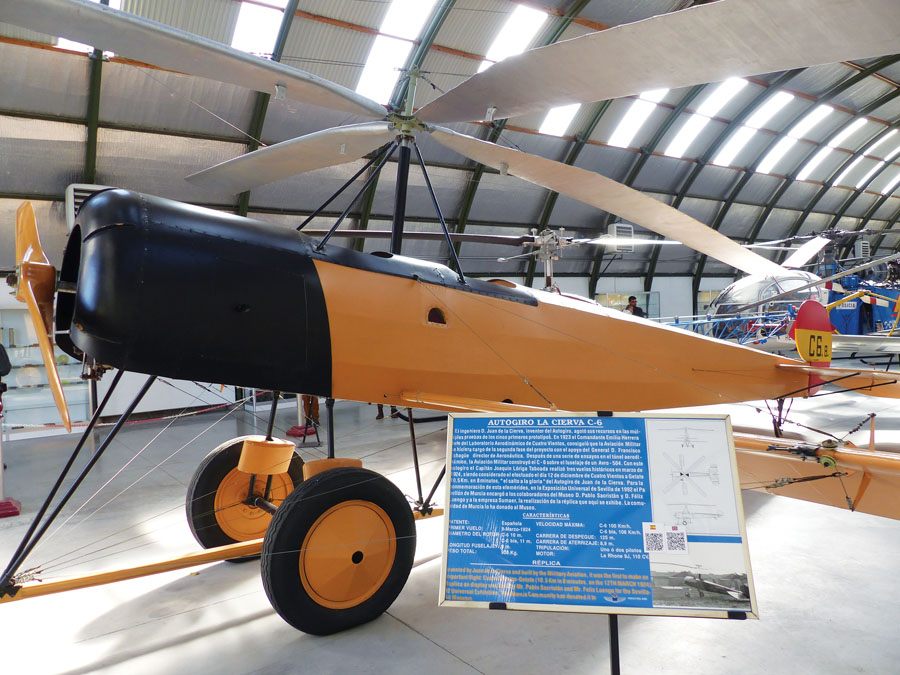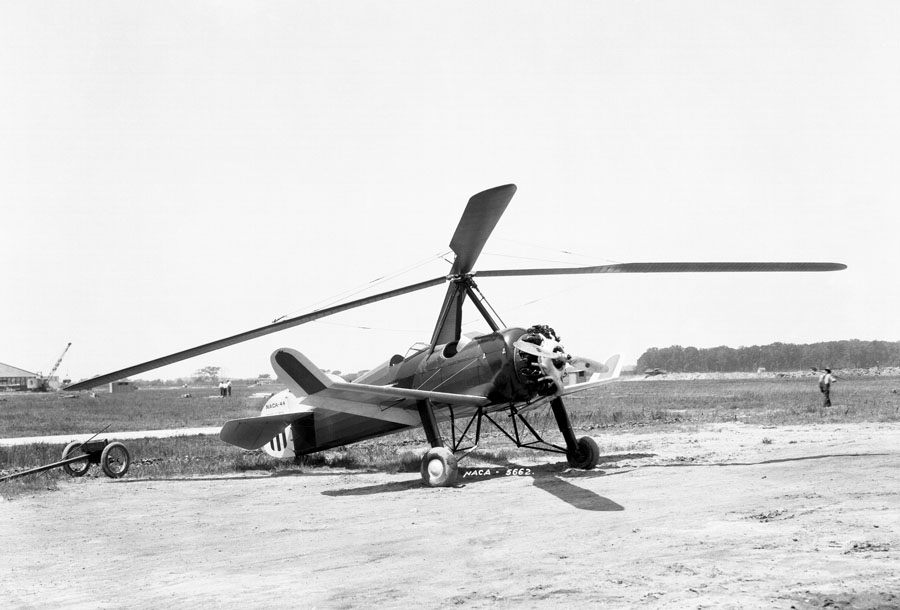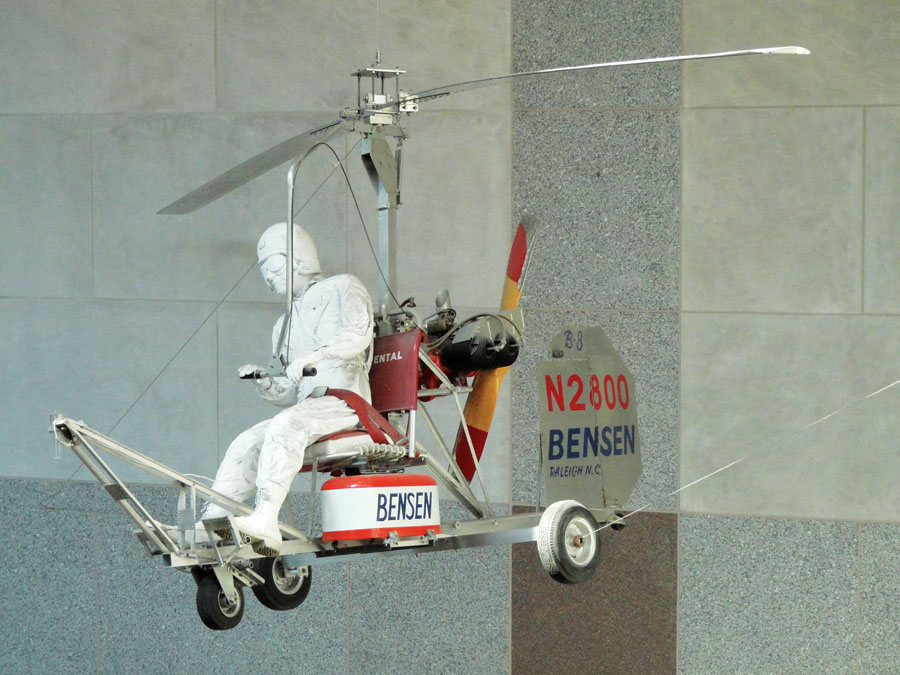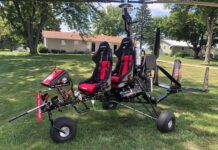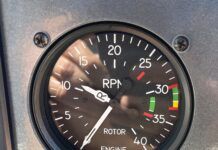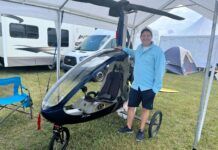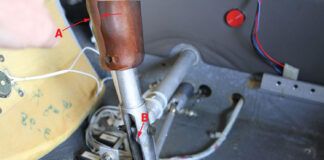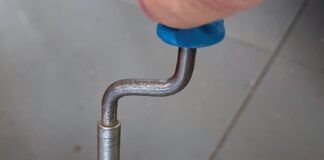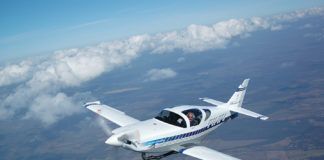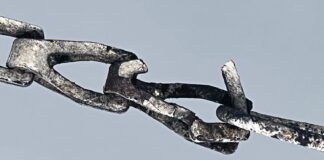Some months ago, during our discussion of the flying qualities of trikes, a reader wrote to KITPLANES and pointed out that there were several similarities between trikes and gyroplanes. John Hunt, of Glendale, Wisconsin, wrote: “Love this month’s discussion. Would like to add that gyroplanes are also weight-shift controlled and have the same problem with tucking in at negative angles of attack.”
John’s comments are in keeping with the theme we have been following for a while of unusual configurations that don’t fly like conventional airplanes, so we now turn our attention to gyroplanes. Gyroplanes also have a similarity to our last subject, the Flying Flea, in that they fall into the category of aircraft that were supposed to be safer than conventional airplanes, but weren’t.
This autogiro la Cierva C-6 is part of the collection at the Museo del Aire in Madrid, Spain. (Photo: Benjamn Nez Gonzlez [CC BY-SA 4.0] via Wikimedia Commons)
Juan de la Cierva
The modern incarnation of the gyroplane is a descendant of the first successful rotary-winged aircraft, the autogiro. Autogiros were first developed in Spain in the 1920s by Juan de la Cierva. His goal was to come up with an aircraft that was immune to stalling and spinning. After Cierva’s first successful flight, other experimenters, notably Harold Pitcairn in the United States, also began developing autogiros.
The early giros were essentially airplanes with an autorotating rotor added as a high-lift device. They were tractors, with aft tails and stubby wings. The rotor had fixed pitch and was not controlled by the pilot. Flight control was provided by airplane-like elevators, rudders, and ailerons.
The early giros flew reasonably well. They were capable of extremely slow flight and could make steep approaches to near-vertical zero-roll landings. The autorotating rotor was successful in providing the resistance to stalling and spinning that de la Cierva was after.
There was one significant problem with them, however. At low airspeeds and high angles of attack, the airplane-style control surfaces lost effectiveness. In the last stages of a steep descent, the pilot had very little control over the machine, so the last bit of a near-vertical landing was a semi-controlled flop, with the pilot counting on having aimed the machine at the right spot before putting to high angle of attack for touchdown.
The solution for this was to develop the rotor system technology so that the rotor could control the aircraft in pitch and roll, while directional control remained with a conventional rudder. These “wingless autogyros” replaced the earlier types, and by the late 1930s several types of rotor-controlled wingless gyros were flying. Although the wings and ailerons had disappeared, these machines retained the airplane-like fuselage configuration, horizontal tail, and vertical fins and rudders.
This Pitcairn PCA-2 autogiro was used at Langley Field by the National Advisory Committee for Aeronautics (NACA) for an early investigation of rotor systems. (Photo: NASA)
Harold Pitcairn
The next development was jump takeoff capability. Up to that time, giros were capable of extremely short landings, but still needed a significant ground run to take off. Pitcairn developed the technique of de-pitching the rotor on the ground and then using engine power to spin up the rotor to well above flight rpm. Once the rotor was up to speed, it was de-clutched from the engine, and the pitch was increased to a flight setting. The stored energy in the rotor allowed the machine to jump straight up as the rotor slowed to its steady-state flight rpm. During the jump, the propeller was used to accelerate the machine to a high enough airspeed to sustain flight. Pitcairn’s PA-36, which first flew in 1939, was capable of jump takeoffs over a 30-foot obstacle.
The successful development of the rotor sytem for the autogiro also planted the seeds for its demise. In the PA-36, there was a rotary-winged aircraft that had both collective and cyclic pitch control of the rotor and could make vertical takeoffs and landings. Since the rotor was not powered in flight, it could not hover, but once the problems of controlling an aircraft via a rotor had been solved by autogiro designers, the newly-developed rotor technology made practical helicopters possible. By the end of WW-II, the Sikorsky R-4 was in service with American forces, and several types of helicopters were also being operated by German forces.
Harold Pitcairn, who developed cyclic and collective pitch control and held patents on both, allowed the U.S. government to use his patents royalty free for the duration of WW-II. After the war, this royalty-free license expired, but the government persisted in buying helicopters using Pitcairn patented technology from other companies, without requiring that anyone start paying royalties to Pitcairn.
Pitcairn filed suit against the government for royalties on his patents in 1951. The suit was not finally settled until 1977, when the court found that Pitcairn’s patents were valid and had been infringed upon, and awarded the plaintiffs (Autogiro Company of America, and Harold Pitcairn) a judgment of slightly more than $32 million. By then, Harold Pitcairn had been dead for 17 years.
After WW-II the autogiro disappeared from the skies, as helicopters entered service in ever-greater numbers.
Bensen B-8M Gyro-Copter on display at the North Carolina Museum of History in Raleigh, North Carolina. (Photo: Daderot)
Igor Bensen
The modern (if you can call it that) gyroplane had its beginnings when, in 1955, Igor Bensen flew his first Gyro-Copter. The Gyro-Copter was intended to be a safe, low-cost, simple machine for the amateur builder/pilot. Although the Gyro-Copter was technically an autogiro, supported in flight by an unpowered, autorotating rotor, its configuration was very different from the pre-war autogyros.
The Gyro-Copter consisted of a very simple frame composed primarily of two pieces of rectangular aluminum extrusions. A horizontal piece was the only fuselage. The pilot’s seat was attached to the forward portion of this boom, and a fin and rudder to the rear. Just behind the pilot’s seat, a second extrusion served as a rotor mast, with the rotor head attached to its top. The engine (initially a surplus McCulloch two-stroke drone motor) was mounted in pusher configuration to the aft side of the rotor mast. There was a rudimentary landing gear and a short pedestal in front of the pilot to hold a few flight instruments and not much else.
Significantly, beyond its extreme simplicity, the Gyro-Copter had two major configuration differences from the earlier autogyro. First, the pusher engine was mounted much higher than the tractor engine of the earlier machines, so the thrust line was well above the center of gravity. Second, the Gyro-Copter had a very short tailboom and no horizontal tail.
The Gyro-Copter was touted as a very safe aircraft because it was theoretically immune from the hazard of stalling and spinning, and there is no doubt that it was about as simple as a flying machine can get.
Unfortunately, it did not prove to be particularly safe in service. Although it did not stall or spin, there were several other accident modes that appeared, involving either what appeared to be pilot-induced oscillations in pitch, or sudden “bunt-overs” where the gyro would abruptly pitch nose-down. Both of these modes usually ended with the rotor blades flapping down and striking the tail, with fatal consequences.
Some of these accidents were the result of completely untrained pilots trying to teach themselves to fly with little or no instruction, and some were due to the fact that the gyroplane had very different flying qualities than a fixed-wing airplane. With the passage of time and better instruction of pilots, the gyroplane accident record improved, but it has never gotten good enough to make a credible claim that gyros are safer than airplanes.
Flying a Gyroplane
The flying qualities of today’s gyroplanes vary widely from type to type. Some types have significant issues, and there has been much controversy about the causes and seriousness of these.
While my own gyroplane experience is limited to three flights, each in a different type, I was able to experience some of these issues firsthand. Of the three types of gyros I have gotten to fly, only one had flying qualities that I would deem as acceptable from the point of view of a fixed-wing pilot.
My first experience was in a well-known two-seat side-by-side gyro with a very experienced instructor who was acting as a demonstration pilot for the company that produced the machine. What struck me immediately was that the aircraft was dynamically unstable in pitch, and that the instability got worse as airspeed increased. I needed to keep the stick in constant motion fore-and-aft to maintain steady-state flight at constant airspeed. It would not be possible to trim this machine to fly hands-off for even a moment. Some of this characteristic seemed similar to that of a helicopter, in that the stick controls the tip-path plane of the rotor and not the attitude of the body, so the pilot’s pitch cues are significantly different than in a fixed-wing airplane. Even with this taken into account, the longitudinal control work load was much higher than a helicopter in forward flight, or any fixed-wing airplane I had ever flown.
A second example was a tandem two-seater. This one was quite benign in pitch, and did not display the instability I had seen in my earlier experience. What was striking was that, although it was well-behaved in pitch, it was directionally unstable. Constant rudder pedal inputs were needed to keep the yaw string centered, and a very large, leading rudder input was needed when rolling into or out of a turn, or the sideslip would build up rapidly to a quite large angle.
I did fly one gyroplane that had none of these issues. Although the control forces were quite heavy, it had acceptable stability, and in cruise flight could be piloted much like a high-drag fixed-wing airplane. If nothing else, this experience showed me that the poor flying qualities I experienced on the other two types were not inherent to gyroplanes as a whole.
Next month we will delve into the causes, and cures, of some of these issues.

